If you’re transitioning to natural hair there is a high chance you heard about the Curly Girl (CG) Method to care for your hair. What sets this approach apart from others is the fact that it can be applied to anyone who has curly hair, it is not just for African hair, in fact, its creator, Lorraine Massey is Caucasian. Frustrated with how conventional hair shampoos left her hair she set herself to create a hair routine that catered for her curly hair and went on to publish Curly Girl: The Handbook. Lorraine’s book success is explained by her understanding of the concerns and needs of many curly girls who follow her method religiously and swear by it.
THE PREMISE BEHIND THE METHOD
The main claim in this method is that conventional hair shampoos are full of harsh surfactants that strip all the sebum and moisture from curly hair. They leave our hair dry, brittle, frizzy and unmanageable. To avoid this all shampoos must be avoided and instead a conditioner should be introduced to cleanse the hair. This is what we know as co-washing or conditioner washing, which also makes this approach a no-poo method for hair care.
Similar to detergents, surfactants work on wet hair to help release dirt and grease. Unfortunately, strong surfactants are so effective in what they do that they also strip the natural oil in our hair (sebum) leaving our hair unprotected from external damage and from quick moisture release. For straight hair, this is not a big deal since sebum can travel along the hair shaft quite easily. However, for us curly girls this is bad news because sebum can only protect the hair closest to the roots. The coils and kinks in natural or transitioning hair prevent sebum from travelling from roots to ends. (Also read The Truth About Surfactants For Curly Hair And Why You Need Not Just Mild Ones)
Co-washing not only saves our curls from this stripping ritual but it can also be an effective cleanser (Read Co-Washing Does It Really Clean Your Hair?). They contain ingredients that have cleansing properties but they also provide emollients to soften the hair like oils and butters, humectants to keep moisture in like glycerine, panthenol or honey and some have proteins to help strengthen the hair like soy, wheat or silk protein.
THE RULES
However, this highly praised method in the natural hair community doesn’t come without its rules, and if you want it to work for you, you’re gonna have to follow them. There is, however, a modified version of the CG Method where you’ll be able to “bend the rules”.
No Sulphates
These leather foaming agents are great cleaners but they also create great havoc on our natural hair, so they must be avoided at all costs. The good thing about sulphates or sulfates is that you can easily identify them as they will normally end in “sulphate/sulfate” or “sulfonate”. Common sulphates you’ll be able to spot on shampoos are:
Sodium Laureth Sulphate or Sodium Lauryl Sulphate
Ammonium Laureth or Lauryl Sulphate
Alkylbenzene Sulfonate
Sodium Cocoyl Sarcosinate
But, if you can’t give up the foam or adapt to the no-poo you can always follow the modified version which uses milder sulphates (low-poo). You can still delight yourself in the foam and know that these sulphates are more gentle on the hair. Here are a few you can look for:
Cocoamphodipropionate
Cocamidopropyl Betaine
Sodium Cocoyl Isethionate
Behentrimonium Methosulfate
Babassuamidopropyl Betaine
No Silicones
Many of the hair care products available in the market have silicones in them. They coat the hair to help close the cuticle layers giving it that smooth, frizz-free and shiny appearance, to prevent moisture release and to protect it from heat tools. Sadly, they also create build up on the hair strand preventing moisture from getting in. In essence, they suffocate our hair by not allowing any moisture to get in.
The only way to remove silicones is by using a shampoo, and because this is not allowed in the Curly Girl Method all the products you use must not contain silicones. A small clue to finding them is that they end in “one”, “conol” or “xane”. Here is a small list of silicones you will find in your conditioners, deep conditioners and hair stylers:
Amodimethicone
Cetearyl Methicone
Cyclopentasiloxane
Trimethylsilylamodimethicone
Dimethiconol
Dimethicone
There are, however, a few silicones that create build up but seem to be washed out with a simple co-wash such as Cyclomethicone, Behenoxy Dimethicone, Stearoxy Dimethicone and Bisaminopropyl Dimethicone. Others are completely water soluble and won’t create build up, so they’ll be OK for you to use. Subscribe to our list and get access to a Free Resource Library where you gain access to a Silicone Index of soluble, insoluble and Curly Girl approved silicones.
Dimethicone Copolyol
Hydrolysed Wheat Protein Hydroxypropyl Polysiloxane
Lauryl Methicone Copolyol
Avoid Drying Alcohols
Some alcohols in hair products can be drying to the hair, and because curly hair needs as much moisture as it can get they are to be avoided.
Denatured Alcohol
SD Alcohol 40
Ethanol
Propyl Alcohol
Instead, look for moisturising alcohols such as Behenyl Alcohol, Lauryl Alcohol, Stearyl Alcohol or Isostearyl Alcohol to name just a few.
THE HAIR REGIMEN
The regimen itself is simple, to accompany her Handbook for Curly Girls Lorraine Massey developed the DevaCurl hair care line that will make it easy for you to follow this method. It will save you the time and stress at trying to read labels on the back of hair products and figuring out which ones are allowed or not.
Cleanse
I have already explained to you the benefits for curly hair of using a no-poo cleanser, but as Lorraine Massey says![]() there are also ecological benefits as well. The absence of sulphates means that when you use your cleanser there will be no lather, which means less water will be needed to remove it, therefore, less impact on the environment. Start by wetting your hair and apply your cleanser giving your scalp a good massage to release dirt and grease. Rinse off with water. The frequency of hair cleansing depends on your needs for many CG supporters is varies from 1 to 3 times a week.
there are also ecological benefits as well. The absence of sulphates means that when you use your cleanser there will be no lather, which means less water will be needed to remove it, therefore, less impact on the environment. Start by wetting your hair and apply your cleanser giving your scalp a good massage to release dirt and grease. Rinse off with water. The frequency of hair cleansing depends on your needs for many CG supporters is varies from 1 to 3 times a week.
Products – No-Poo Cleanser or Low-Poo Cleanser.
Hydrate/Condition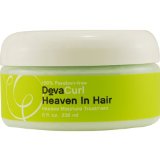
Apply the conditioner, as usual, making sure to cover all hair strands. Preferably, finger detangle your hair or use a wide tooth comb. Once you are finished, rinse your hair but leave half of the conditioner on. Squeeze the excess product with your hand in an upward movement, this will help activate the curls. You can also do this with a microfiber towel, a t-shirt or a paper towel.
Products – One Condition Creamy Instant Conditioner or Heaven In Hair Intense Moisture Treatment
Style
This is when you will set your curls with a leave-in, moisturiser and/or a generous amount of gel and scrunch it in, in an upwards movement to not disturb the curls. If you feel your hair is flat you can place a few duck clips on the roots to lift the hair. Let it dry almost entirely, scrunch out the crunch and fluff from underneath.
Products – Angell Lightweight Curl Defining Gel, Arc Angell Firm Hold Defining Gel, Set It Free Moisturising Spray, Mist-er Right Curl Revitalizer, Set Me Up! Versatile Moisturising Styler and B’Leave-in Curl Booster & Volumiser.
FINAL THOUGHTS
At the surface, the Curly Girl Method might seem simple, but in reality, it can be overwhelming. Knowing the names of all the sulphates and silicones, not to mention drying alcohols, can be quite daunting. However, I believe that with time you can get familiar with most of them. Start by identifying the ingredients to avoid in your products, replace them if needed and go from there. Make yourself a cheat sheet and carry it with you when you go shopping for hair products.
When you’re a curly girl, getting familiar with product ingredients is important. I don’t have all the names in my mind but I do have a cheat list, and that makes it simpler. Of course, this is not everybody’s cup of tea yet, if you are willing to try you should clarify your hair first to remove all product build up and trim your hair to start with a clean sheet. Weekly deep conditioning is advised along with regular dry hair trimming.
In this article, I named just a few ingredients to help you get started. If you want more in-depth information about ingredients go to naturallycurly.com and do a term search or visit the Environmental Working Group. Remember that science and this industry are growing and evolving and new ingredients are always coming up but don’t feel defeated, once you find your staple products the rest will be easier.
Have you considered the Curly Girl Method? Do you follow it? What do you like about it?



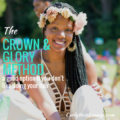
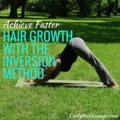
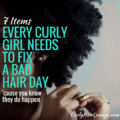
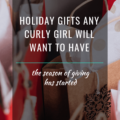
26 thoughts on “The Curly Girl Method Explained”
Ended up on this page by accident but I HAVE to show it to my partner. She’s an eastern European girl with super curly dark hair – she’s not impressed by it!
I suppose she’d like to know more about the opposite end of the spectrum – how to tame your hair and fight against the curls…
Any ideas?
Hi Chris,
Your partner doesn’t need to fight against the curls! Please don’t let do that. That is the point of this article, let her embrace them. Forward this email to her and she’ll have a starting point from where she can learn to love them and care for them. All the best to you both!
Monica
Hey,
I’m personally not a huge fan of curly hair but I know my girlfriend and mum love it.
They would love to read this and I will show them for sure!
Great article!
Esteban
Hi Esteban,
We can’t all love the same things. I for once love curly hair, it has more personality. Thanks for spreading the word!
This is an article that I will be for sure showing my sister and my mother as they love information like this. Great content, keep up the great work and ill be sure to spread the news to some of the females I know haha. Thank you,
hagop
Hi Hagop,
Glad you liked what you read and think it will be useful to your sister and mother. Thanks!
Hair care is really bit of efforts. But I din’t know there’s so much more. My sister has curly hair and she struggles to keep it healthy and in shape. I will surely tell her about it!!
Hi Demi,
Curly hair is a bit of work in the beginning but it gets easier. If she needs she can surely get some tips on the website I’ll be happy to help.
Although I don’t have curly hair, I do have fuzzy hair, but I am definitely going to try this too. Great post! Really informative content.
Hi Stephanie,
Thanks for your comments and feedback. If you try this method I’m sure the frizzy hair will decrease just by removing sulphates or going low-poo.
Fuzzy hair is curly hair trying to curl but it can’t because it is too dry.
Waouh!
Thank you SO much for clarifying this no-poo method!!!
I’ve heard about it before but could not find a clear explanation and also read that not using shampoo was not a good idea on some blogs…but I guess that with both cleansers mentioned above this is sorted out!
Your article was great and very well written, thank you so much for all this information!
I am mixed and have curly hair but not tough like my mum who is from West Africa but I guess this article will help us both 🙂
I have stopped straightening my hair all the time two years ago and I can see the difference now, my curls look like proper curls 🙂
I cannot give up on dying my hair though which is not great…
Do you know any treatment that I could apply once a week to help with that?
Thanks!
K
Hi Kady,
There are several ways to go no-poo, the CG method is just one and is basically co-washing. Some people do opt to just wash their hair with water which I don’t recommend fungi and bacteria can develop and give place to serious issues. You can also read this article for other no-poo methods to clean your hair.
The Curly Girl Method will help your mum too, kinkier or tighter curl patterns have more difficulties getting the sebum to cover the hair strand. So, by removing the sulphates her hair won’t be stripped of its natural oil. Plus the conditioner will add extra moisture and the gel/styler in the regimen will lock it all in.
As for dyeing your hair, your hair is now more porous (read How to Improve Porosity) and to prevent major damages to your hair’s structure you can make a henna dye recipe (read more about it here), or use Sheamoisture’s Hair Color System. Alternatively, if you can’t give up your hair dye do weekly deep conditioning treatments, do a protein treatment at least once a monce but always follow it with with a moisturising one, use sulphate free shampoo to avoid your hair getting drier, use coconut oil as a pre-poo and to moisturise/seal your hair as it prevents protein loss and helps to strengthen your hair.
I hope this will help you both. If you have any more questions don’t hesitate.
Monica
Hello there!
What a great website you have! This was a very interesting write up. I love women with naturally curly hair and I think they should wear it more often instead of trying to constantly straitening and as a consequence severely damaging it.
It is definitely true that a lathering shampoo full of sulfates will dry out hair further. It is important to use a non-lathering shampoo and lots of conditioner.
You should share some DIY hair masks.
Thanks for sharing!
These hair care tips sound so easy and simple, it almost makes me wish I had curly hair! I love my natural waves, but sometimes I think it would be fun to change it up and go curly for awhile.
I will be sure to recommend these tips to my curly-haired friends. I think it is fabulous that you are encouraging those with curly manes to embrace their natural beauty. More power to you, Monica!
Thank you Angela!
Great article with a lot of value inside of it. I see a lot of women damaging their hair with a lot of junk product which contains the chemicals that you mentioned. They ask themselves why I can’t have a healthy curly hair style, your post can be the answer of most of them. Congratulations for this value that you shared and I’ll stay updated
Thank you, Javier!
If it’s not already on your site check out the cherry lola treatment method. It actually does work its just time consuming. So many including myself modify forreal!!! It will stretch the hell out of a braid out, twist out or straight from the shower curly style. It softens the hair and shines it a lot!
Hey Krs,
Yes, I’ve heard of the Cherry Lola Treatment. I’ll make a note to write a post about it here for anyone who wants to know about it, thanks.
I’m 51 and only just heard of this method. I have super thick curly hair. I used to have it long but it was always scraped back off my face and tied up with lots of gel and mousse. I had it cut short and I am now trying to grow it again. I am going to give this method a go as I’m sure starting it with short hair will be easier. I’m sure my youngest daughter will benefit from this also.
Thanks
You’re welcome, Sue! 🙂
I have curly hair and this sounds really good so I think I am going to try it bit my hair gets greasey really easily so washing with conditioner and leaving it in freals me out a bit?!
Hi Hannah,
The Curly Girl Method calls for washing your hair with a low-poo cleanser (or, in other words, a sulphate free shampoo), in other words, a product/shampoo that doesn’t have strong surfactants but does have mild, better surfactants for curly hair. Most people focus on avoiding surfactants altogether and look for the no-poo solution which is associated with co-washing or using a conditioner to wash their hair. However, co-washes also come in different sorts. There are those with hardly any surfactants in them, so they hardly clean your hair, and those with surfactants in them which provide some level of cleanliness, this will depend on the number and/or type of surfactants. My best advice for you would be to read Lorraine Massey’s book and my post on Surfactants and Co-washing. Always wash your hair with a sulphate free shampoo and use the cleansing conditioner/co-wash/no-poo product for mid-week clean, moisture boost, or style refresh.
I hope this helps, Hannah.
Mónica
I don’t stress about all that stuff. I use shampoos for curly hair, but I dilute them. I deep condition once a week.
I use leave-in and curling custard, plop for 20 minutes, add mousse (not disturbing the shape). diffuse till 70% dry, and then leave it to airdry. Done.
It seems you found what works for you and that is always ideal.